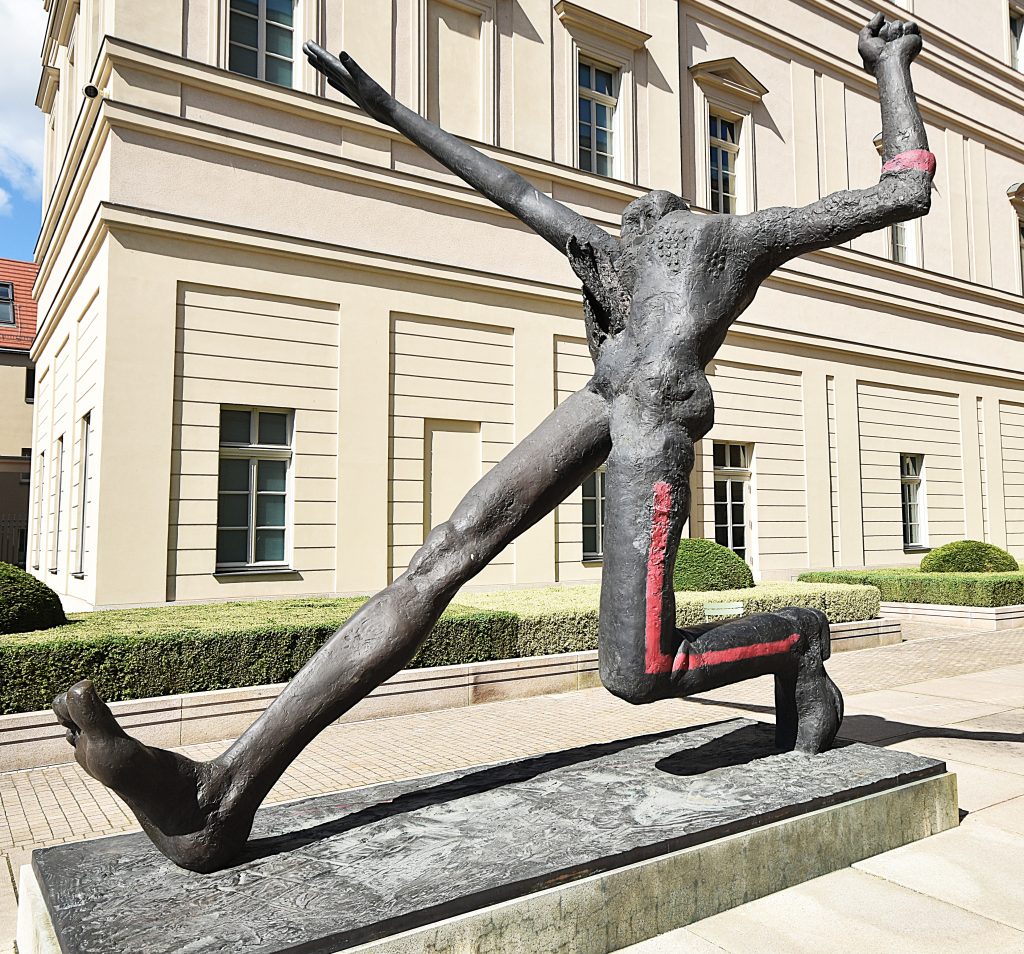
If you think art can only thrive in free and open societies, think again. In East Germany—the German Democratic Republic—art was actually pretty subversive sometimes. And it wasn’t just about artists openly fighting the dictatorship. Even big names like Werner Tübke and Bernhard Heisig didn’t always paint a rosy picture of communism.
One artist who got more and more critical over time was Wolfgang Mattheuer. His most famous work stands in the yard of the Museum Barberini in Potsdam. You don’t even have to buy a ticket to see it because the yard is open to the public. The bronze sculpture, called Der Jahrhundertschritt (“Step of the Century”), is about sixteen feet tall. It shows a figure with one arm raised in a Nazi salute, while the other ends in a fist—that was the communist salute back in the 1920s. One foot is bare and stepping forward, the other wears a military boot and stays firmly on the ground. The clothes have stripes like uniforms, but there’s no head—just a skull sticking out from a blown-up chest.
There are lots of symbols here, but the message is pretty clear. It’s about the 20th century—Germany torn apart by two big ideologies that justified two dictatorships: the Nazis (1933 to 1945) and the communists (1945 to 1989). And the real victims? The people caught between those two awful regimes—broken, scared, hiding, but still trying to step into the future.
Leave a Reply